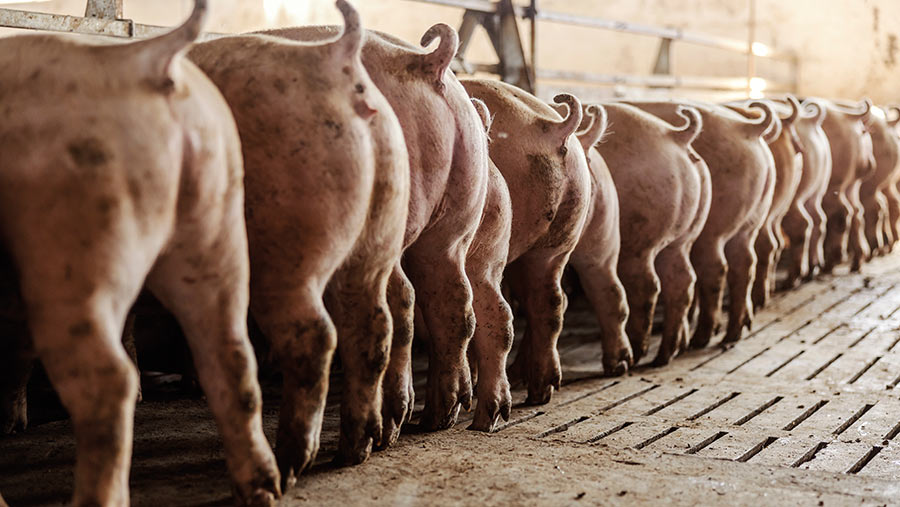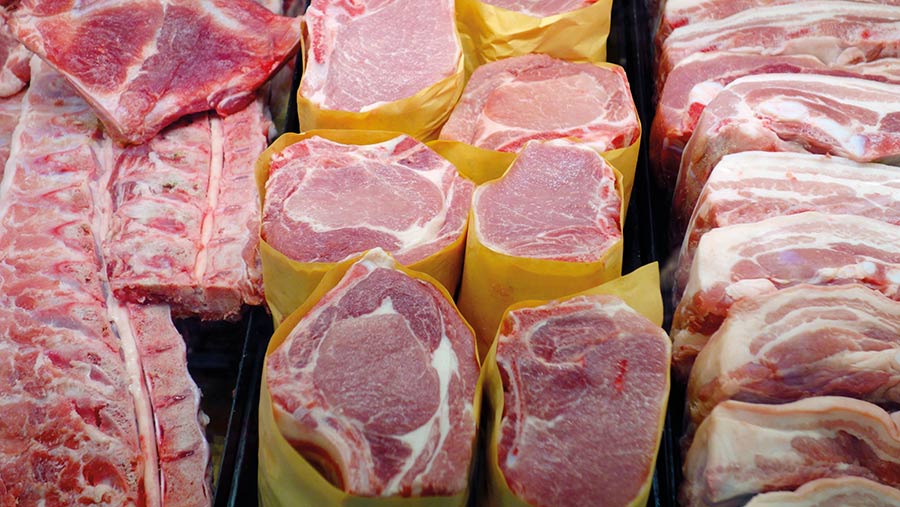What pig farming looks like in Canada
 © Dusan Petkovic/Adobe Stock
© Dusan Petkovic/Adobe Stock With winters that regularly dip below -15C and declining demand for pork at home, pig farming in Canada has its challenges.
While exports dominate production, with 70% of pigs delivered to world markets or as live pigs to the US, competition from Spain for the Asian market last year had a significant impact.
This left many packers facing big financial hurdles, according to Jim Long, chief executive officer at Genesus Genetics.
See also: Why maintaining pig slaughter capacity is vital to industry future
As in the UK, pig price is a challenge, too, and Canadian producers are presently averaging a loss of £15 a head, he says.
Public support
On a more positive note, the pig sector in Canada faces little to no issues with the public perception of pork production.
Mr Long says there are strict rules in place regarding housing and environment, antibiotics, castration and weaning age, which seem to address any consumer concerns.
Despite the positive perception, consumption is down, from 26kg a head in 2016 to 22kg in 2022.
Mr Long believes this decline is largely due to the industry’s drive to produce leaner pork, which he says has come at the expense of taste.
“We have led the fight against leaner pork, and we are seeing a price advantage for more marbled, redder pork at retail level.”
Government support for pig production is largely concentrated in the French province of Quebec.
Most recently, a support programme called Asra (Assurance Stabilisation des Revenus Agricoles) made C$140m (£86.5m) available to producers in the region to combat low prices.
Mr Long says this has caused tension between producers in this region and the rest of Canada.

© Valentino Visentini/Alamy Stock
Future opportunities
With an increase in retail value for the more marbled, redder pork, a brand called Lethbridge Heritage Pork is offering a more financially attractive opportunity for producers.
Marketing claims for the brand are based purely on better marbling, colour and taste.
In supermarkets, Mr Long says this pork is achieving higher prices than products which are marketed as being free from antibiotics and grain-fed.
For example, in one supermarket recently, “free-from” pork chops were selling at C$17.62/kg (£10.74/kg), while comparative Lethbridge Heritage chops were achieving a premium at C$22.02/kg (£13.43/kg).
Pig herd management in Canada
The breeding herd in Canada has flatlined over the past five years and sits at a total of 1.284 million (compared with 1.254 million in 2017), says Jim Long, chief executive officer at Genesus Genetics.
Integrated packers Olymel, Maple Leaf Foods and HyLife have control of about 300,000 sows, while the other 900,000 are with independent producers.
All production is indoors because the extreme cold temperatures make the country unsuitable for outdoor production. Weaning takes place at 21 days and all pigs are castrated.
The current average total feed cost a pig from farrow to finish is C$170.41 (£105). Target finishing weight is 135kg.
Genetics
Genetics have evolved to use primarily Duroc sires on Large White or Landrace females.
Genesus is now the only remaining Canadian pig breeding company, and Mr Long says that the country’s high health status enables them to supply these genetics worldwide.
In the UK, Genesus has a strong foot in the market with three collaborative production facilities in Northamptonshire, Cornwall and East Lothian.
Jim Long was speaking at a recent webinar hosted by AHDB.
